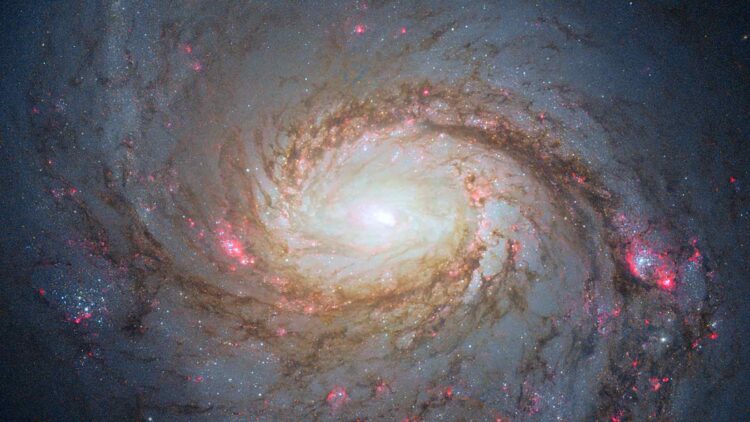While we all have an image of what a galaxy is, most of us are unaware of the different scale that they can have and how they can be relative to one another. Ever since we have found ways to see beyond our closest stars we have been trying to identify other celestial arrangements that could confirm that we are not alone, and while we have not been able to do this, we have found many other galaxies that are fascinating to study.
One of the most interesting ones can be found about 45 million light-years from us in the constellation Cetus, which literally means “The Whale.” The official name of this stunning galaxy is Messier 77, though people have started calling it the “Squid Galaxy” thanks to its unique tentacle-like features, which we can now appreciate in all their glory thanks to the Hubble Space Telescope, which has been able to capture one of the best images of it to date.
The Messier 77 galaxy, an impressive celestial body that we now get to study in detail
Although many argue that the golden age of astronomy has not yet arrived, astronomers and enthusiasts have been making amazing discoveries and progress for centuries. In fact, Messier 77 owes its name to an 18th century French astronomer named Charles Messier and his partner Pierre Méchain, who were hunting for comets in the sky. Doing this is a very laborious task, and so to streamline the process, they started creating a list of all other celestial bodies that they could see that were not comets. The list contained many entries and within it we could find the now affectionally called “Squid Galaxy”, which at the time was just object number 77 in the famous Messier Catalog.
In all fairness, Pierre Méchain was actually the one who first spotted it in 1780, and Messier later added it to his list.
It is actually quite impressive that they were able to see as much as they did, as telescopes back then were nowhere near as powerful as the ones we have today. To them, this glowing object with a bright core and fuzzy outer area looked more like a cloud of gas or maybe a tight-knit group of stars but definitely not a galaxy. If we look at it through the technology they used back then and even later models, it did kind of resemble a nebula and so it would be more than 100 years before scientists figured out that these so-called “spiral nebulae” were actually whole other galaxies, far beyond the Milky Way, especially since we did not contemplate that there could be any other galaxies out there.
Thanks to tech advances we know Messier 77 is a galaxy all on its own, and the nickname “Squid Galaxy” is more of a modern creation, inspired by the wispy filaments that seem to trail off from the main body, curling around it like squid arms in the deep ocean. We are now able to see it in so much detail because of the new upgrades to the Hubble Space Telescope, a joint effort between NASA and the European Space Agency.
Bu it is not the first time that the Hubble has snapped a photo of this galaxy, back in 2013 it was already able to take a fairly clear picture of the galaxy, although we could not see in as much detail the “tentacles” that gave it its new moniker, but now, using more advanced filters and better image processing tools, astronomers have been able to pull out much finer details, giving us an even clearer view of this cosmic phenomena.

